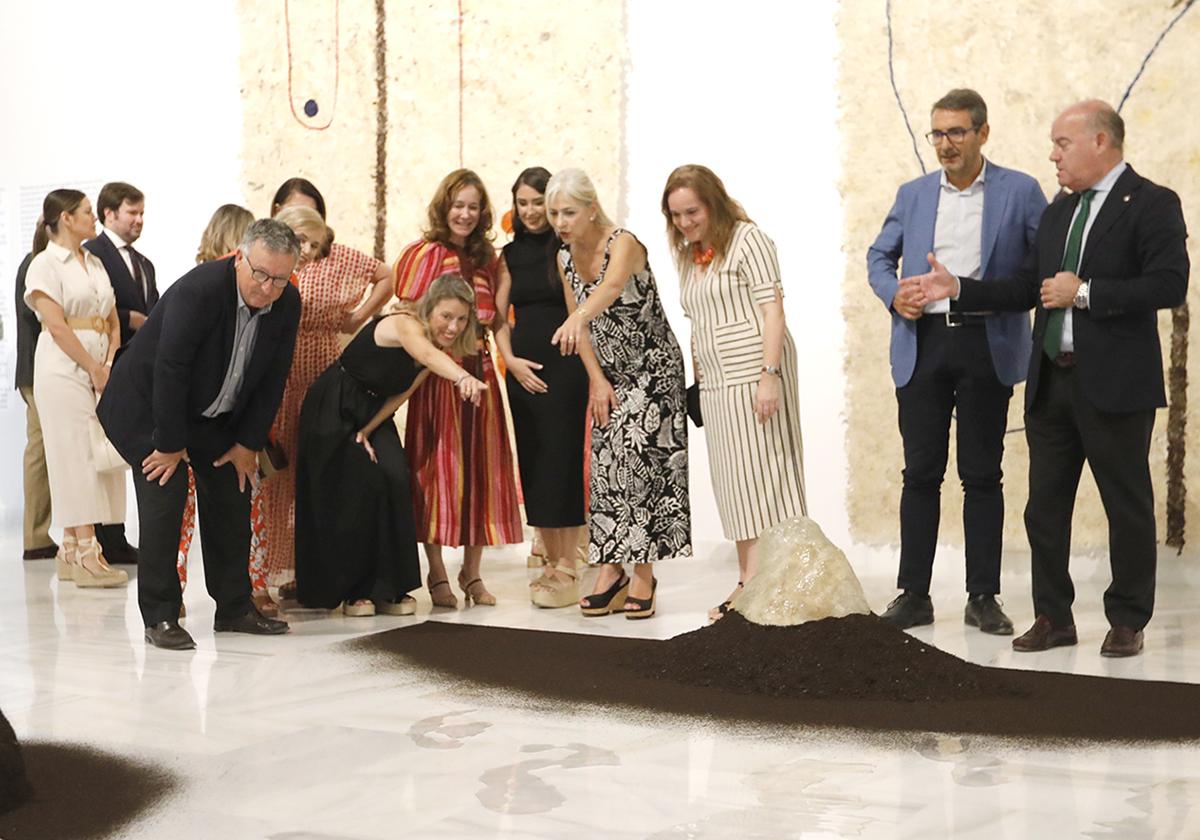Antequera's dolmen complex will mark 10 years as Unesco World Heritage Site without permanent collection for museum
An event to celebrate the ninth anniversary saw the unveiling of a giant LED screen to welcome visitors to the popular tourist attraction in the north of Malaga province
The Junta de Andalucía regional government has marked nine years since the announcement that the dolmens historical site in Antequera in the north of Malaga province had been added to the list of Unesco World Heritage Sites by extending the promise that the museum which was announced for 1992, will be completed. The building was inaugurated in 2022, but three years later the permanent collection is still incomplete.

Speaking during a visit to the site on Tuesday 15 July, the Andalusian regional government's spokesperson for culture, Patricia del Pozo, revealed that it will be at least three more years before the museum is finished, which means that the ten years of Unesco recognition will be celebrated without the museum being completed.
She explained that they hope to start the work with the tender for the contract valued at two million euros in 2026. If all goes well, "I would love it to start at the end of 2026" with the project scheduled to take a year to complete, so the museum could be inaugurated in 2028, six years after the archaeological site opened its doors.
Despite the delays, del Pozo pointed out that "it is a priority project that we are enthusiastic about because this is a jewel" but recognised that it is not possible to "go as fast as one would like, but the important thing is that we are not stopping".
During Tuesday's visit a giant television screen was unveiled which shows visitors a video on the Unesco complex. It measures eight metres wide by three metres high and consists of 60 LED screens joined together.
Permanent collection
Those who visit the complex once it is finished will begin their visit with the giant screen where a video will welcome visitors and explain what they are going to see between the Menga, Viera and El Romeral dolmens, including information about their construction, importance and images of the solstices and equinoxes.
Then visitors will move on to the permanent collection, which will be the largest room, with large windows overlooking the burial mounds and the Peña de los Enamorados. Here the museum project will exhibit pieces and contents about prehistory in Antequera. There will be exhibits such as those from the Cueva del Toro in El Torcal de Antequera, which are the earliest known Neolithic settlements. As well as pieces from nearby villages, which are currently being stored or exhibited in other places.
Tuesday's visit saw the inauguration of the two temporary exhibitions that did open in 2022: 'Megalithism in the lands of Huelva', at the Gómez Moreno and 'Resonancias de la tierra sagrada', organised by the Centro Andaluz de Arte Contemporáneo (CAAC), which shows works by six current creators who, from different creative perspectives, reflect on the landscape and its ancestral and symbolic links.
Del Pozo was accompanied by the mayor of Antequera, Manuel Barón; Aurora Villalobos, director general of museums and cultural sites and the director of the complex, Carmen Mora.


Comentar es una ventaja exclusiva para registrados
¿Ya eres registrado?
Inicia sesiónNecesitas ser suscriptor para poder responder.
Necesitas ser suscriptor para poder votar.